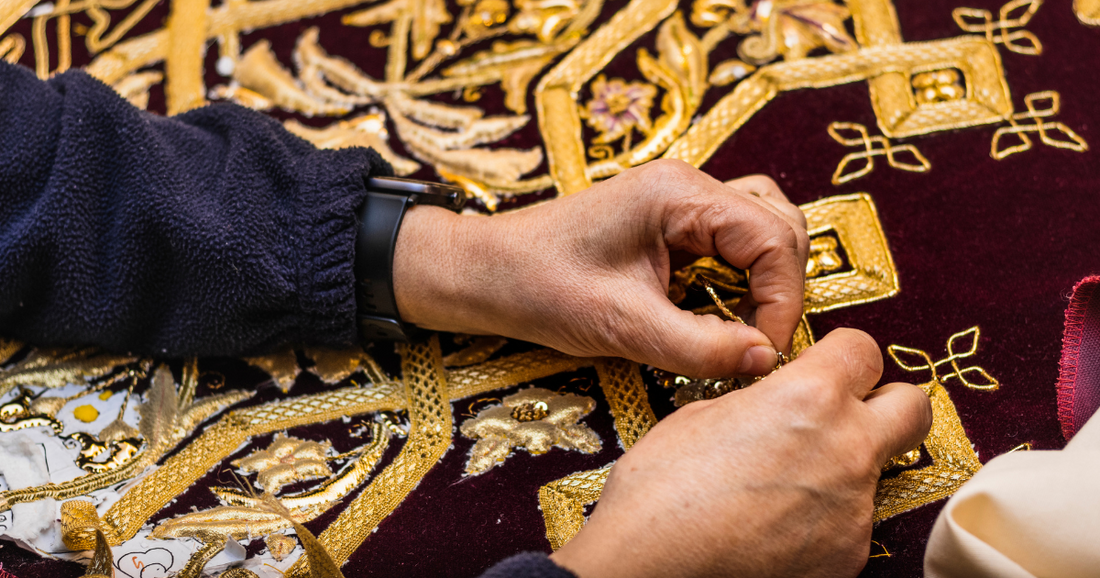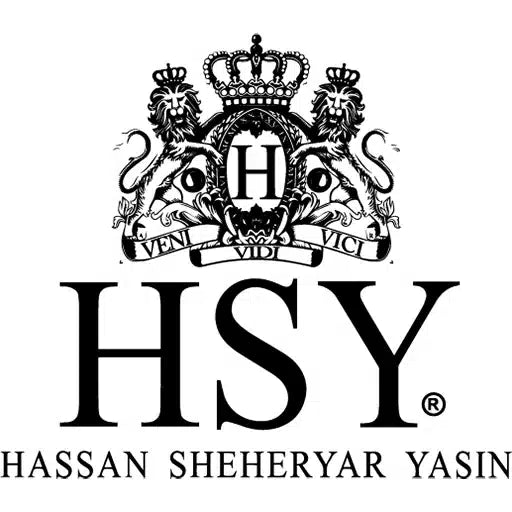
The art of embroidery: a timeless tradition in Pakistani fashion
Share
Embroidery is an intricate and beautiful art form that has been an integral part of Pakistani culture and fashion for centuries. This traditional craft has been passed down through generations, with each region in Pakistan boasting its unique embroidery styles, techniques, and patterns.
Embroideries history in Pakistani fashion
Pakistan has a rich fashion heritage, and its rich, intricate embroidery is a staple of it. Its history dates back to the Mughal era when artisans would meticulously craft intricate designs on royal garments, textiles, and accessories. Over time, different regions developed their distinct embroidery styles, each with its unique characteristics and significance.Symbolism and significance
Embroidery is not just a decorative art form in Pakistani culture; it holds significant symbolic meaning. Different embroidery patterns and designs can represent:- Status and Wealth: Intricate, elaborate designs often signify wealth and social status.
- Region and Heritage: Embroidery styles can identify a person's regional background and cultural heritage.
- Marital Status: Specific embroidery patterns can indicate a woman's marital status or stage of life.
Pakistani embroidery styles: a diverse heritage
Pakistan is home to a diverse range of embroidery styles, each with its own unique characteristics and significance. Some of the most notable Pakistani embroidery styles include:- Kashmiri Embroidery: Known for its intricate floral patterns and use of silk threads, Kashmiri embroidery is a classic style that originated in the Kashmir region.
- Sindhi Embroidery: Characterized by bold, geometric patterns and vibrant colors, Sindhi embroidery is a staple of Sindhi culture and tradition.
- Punjabi Embroidery: Famous for its delicate, floral designs and use of gold and silver threads, Punjabi embroidery is a timeless style that has been passed down through generations.
- Balochi Embroidery: Known for its intricate, tribal-inspired patterns and use of bright colors, Balochi embroidery is a unique and captivating style that reflects the region's rich cultural heritage.
- Phulkari Embroidery: A traditional style from Punjab, Phulkari embroidery is characterized by intricate, floral patterns and the use of silk threads.
The art of zardozi, kamdani, and chikankari embroidery
In addition to the various regional embroidery styles, traditional Pakistani fashion also has several specialized embroidery techniques that have been perfected over centuries. Three of the most notable techniques include:- Zardozi Embroidery: A traditional Pakistani embroidery style that uses gold and silver threads to create intricate designs. Zardozi embroidery is often used to adorn formal wear, including bridal dresses and sherwanis.
- Kamdani Embroidery: A delicate, floral embroidery style that originated in the Mughal era. Kamdani embroidery is characterized by intricate, curved patterns and the use of silk threads.
- Chikankari Embroidery: A traditional embroidery style from Lucknow, Chikankari embroidery is known for its intricate, floral patterns and the use of white thread on light-colored fabrics. Chikankari embroidery is often used to adorn casual wear, including kurtas and tunics.
A modern spin on traditional designs
While traditional embroidery techniques continue to be celebrated, modern Pakistani fashion designers like Hassan Sheheryar Yasin (HSY) are taking a fresh approach to these timeless designs. HSY's collections often feature modern interpretations of traditional embroidery styles, blending classic techniques with contemporary materials and silhouettes.- Fusion of Traditional and Modern Materials: HSY combines traditional embroidery threads with modern materials like sequins, beads, and metallic yarns to create striking, contemporary designs.
- Innovative Silhouettes and Cuts: HSY's designs often feature modern silhouettes and cuts, reimagining traditional embroidery patterns in a fresh, avant-garde context.
- Bold Color Combinations and Experimentation: HSY is known for its bold color combinations and experimentation with traditional embroidery patterns, creating a unique, modern aesthetic that appeals to a new generation of fashion enthusiasts.







